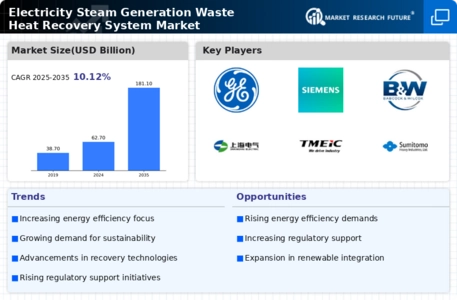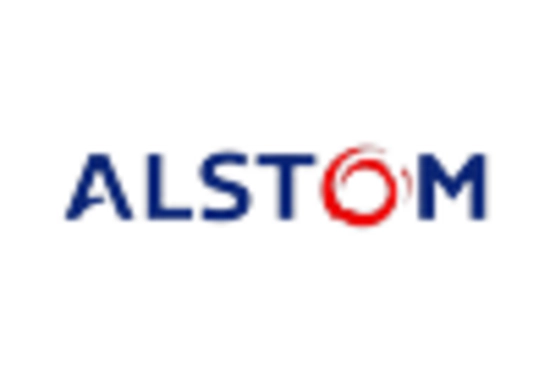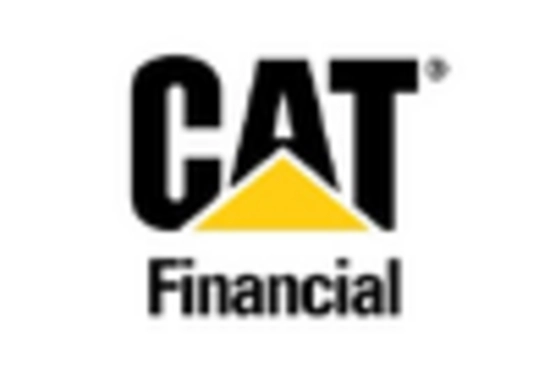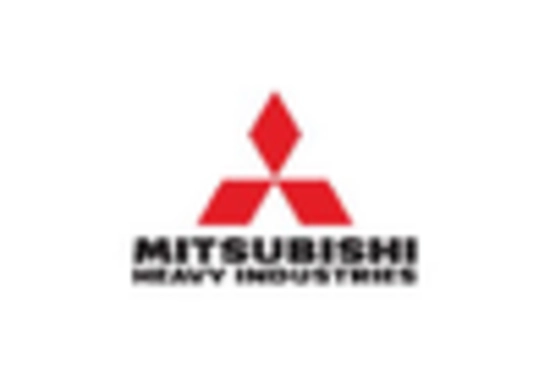Rising Energy Costs
The Electricity Steam Generation Waste Heat Recovery System Market is experiencing a notable surge in demand due to escalating energy costs. As traditional energy sources become increasingly expensive, industries are compelled to seek alternative solutions that enhance energy efficiency. Waste heat recovery systems offer a viable pathway to reduce operational costs by capturing and reusing heat that would otherwise be lost. This trend is particularly evident in sectors such as manufacturing and power generation, where energy expenditures constitute a significant portion of operational budgets. The potential for substantial cost savings is driving investments in waste heat recovery technologies, thereby propelling the growth of the Electricity Steam Generation Waste Heat Recovery System Market.
Technological Innovations
The Electricity Steam Generation Waste Heat Recovery System Market is significantly influenced by ongoing technological innovations. Advances in materials science, system design, and control technologies are enhancing the efficiency and effectiveness of waste heat recovery systems. For example, the development of high-efficiency heat exchangers and advanced control algorithms allows for better integration of these systems into existing industrial processes. Such innovations not only improve the performance of waste heat recovery systems but also expand their applicability across diverse industries. As technology continues to evolve, it is expected that the market for waste heat recovery systems will experience further growth, driven by the demand for more efficient and reliable energy solutions.
Industrial Growth and Expansion
The Electricity Steam Generation Waste Heat Recovery System Market is poised for growth, driven by the expansion of industrial activities across various sectors. As industries scale up production, the demand for energy-efficient solutions becomes paramount. Waste heat recovery systems provide an effective means to harness excess heat generated during industrial processes, thereby improving overall energy efficiency. The manufacturing sector, in particular, is witnessing a resurgence, with increased investments in infrastructure and technology. This industrial growth is likely to create a favorable environment for the adoption of waste heat recovery systems, as companies seek to enhance their operational efficiency and reduce energy costs.
Regulatory Support for Sustainability
The Electricity Steam Generation Waste Heat Recovery System Market is bolstered by a growing emphasis on sustainability and environmental regulations. Governments worldwide are implementing stringent policies aimed at reducing greenhouse gas emissions and promoting energy efficiency. These regulations often incentivize the adoption of waste heat recovery systems, as they contribute to lower emissions and improved energy utilization. For instance, various countries have established tax credits and grants for industries that invest in energy-efficient technologies. This regulatory landscape not only encourages the implementation of waste heat recovery systems but also enhances the overall market attractiveness, as companies strive to comply with environmental standards while optimizing their energy consumption.
Increased Awareness of Energy Efficiency
The Electricity Steam Generation Waste Heat Recovery System Market is benefiting from a heightened awareness of energy efficiency among businesses and consumers. As energy prices rise and environmental concerns grow, stakeholders are increasingly recognizing the importance of sustainable energy practices. This awareness is prompting industries to explore waste heat recovery systems as a means to optimize energy use and reduce waste. Educational initiatives and industry collaborations are further promoting the adoption of these technologies, as companies seek to align their operations with best practices in energy management. The growing focus on energy efficiency is likely to sustain the momentum of the Electricity Steam Generation Waste Heat Recovery System Market in the coming years.

















Leave a Comment